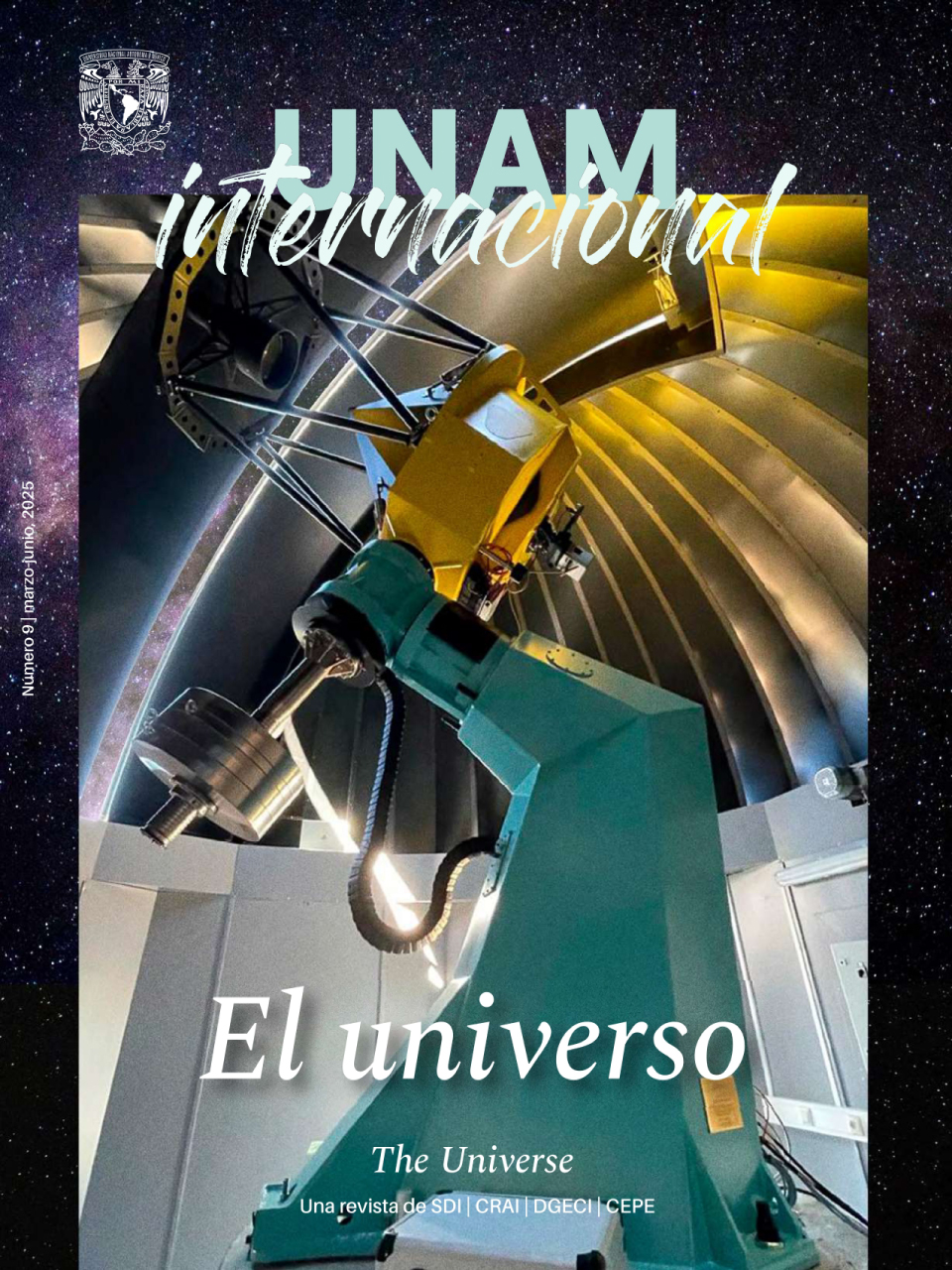31-03-2025
Astronomy in Mexico
Knowledge production is teamwork and astronomy is no exception. To pose an original question one has to be up-to-date with advancements made all around the world. To make observations, one needs leading-edge instruments and specialists from different fields. To be certain that results are correct, one has to share them with the community. All these factors have combined throughout the history of astronomy in Mexico. We will show some examples from the 19th and 20th centuries.Mexican geography engineers had basic astronomy knowledge useful at their job. Some of them also read astronomy books and periodic publications so they learned about the project involving several observatories to follow the transit of Venus in 1874. With the government’s support, an astronomical commission was created, headed by Francisco Díaz Covarrubias, and they traveled to Japan. They made successful observations and, at the same time, they also met astronomers from around the world.
Upon their return they reported to the government that the next transit could be observed from Mexico, so they looked into the creation of an observatory. The National Astronomical Observatory (OAN) was founded in 1877 at the Chapultepec Castle under the direction of engineer Ángel Anguiano. In 1881, Anguiano traveled to Europe with two goals in mind—getting the instruments needed for the new observatory and visiting other observatories to learn how European astronomers worked.
Shortly after the 1882 transit, the observatory moved to Tacubaya, in the outskirts of Mexico City back then. They built an observatory inspired by those Anguiano visited in Europe—not only in terms of spatial distribution but also of organization.
The OAN astronomers started using photography and took advantage of theircontacts to request feedback on their work. These exchanges resulted in them being invited to participate in the most important international project of its time: the creation of a map of the whole sky and the compilation of a star catalog based on photographic plates.
The beginning of the 20th century was a difficult period for the entire country and the OAN was no exception. However, Joaquín Gallo—the director at the time—continued ongoing projects and even started new ones. A total solar eclipse that could be observed in northern Mexico was recorded in 1923. Gallo joined astronomers from all over the world interested in studying this phenomenon by exchanging information before and after the event. He organized a Mexican expedition and welcomed others from the United States and Germany.
A new observatory in Mexico was founded in 1942 thanks to Luis Enrique Erro’s efforts and the advise of the Harvard College Observatory. With the goal of practicing modern astrophysics, facilities were built in Tonantzintla, Puebla, a new Schmidt camera was acquired, and new staff were recruited, including astronomer Guillermo Haro Barraza. He was aware of the importance of training professionals and sent a considerable number of young people to study astronomy abroad, with which an important group started forming. He did the same with optics and the first optics laboratory in the country was soon formed, where they polished the mirrors for the reflecting telescope that was installed at a new observatory in the north of the country, at San Pedro Mártir, Baja California.
Erro soon left the observatory in Haro’s hands, who intensely used the new telescope. He didn’t have any formal training in astronomy but he learned the trade at Harvard. He observed nebulae and variable stars and discovered objects that were unknown until then—small bright nebulae around newborn stars. Even though he reported astronomers Harlow Shapley and Rudolph Minkowski about his discovery early on, George Herbig from Lick Observatory also found them and published his results first. Eventually such nebulae were called Herbig-Haro (HH) objects, giving credit to both astronomers.
Given its location and the quality of its night sky, several countries and observatories showed interest in San Pedro Mártir. The tightest and most constitent collaboration happened with the University of Arizona, which took a photometric 1.5 meters telescope from Arizona to San Pedro Mártir, where a big part of UNAM’s research in international collaboration currently takes place.
Susana Biro studied physics at UNAM’s Faculty of Sciences, and obtained a PhD in astrophysics at the University of Manchester, United Kingdom. She has worked for nearly three decades in science outreach, focusing on topics related to the history of astronomy and the history of public communication of science.
Cristina Siqueiros is studying a PhD on philosophy of science at UNAM, specializing in history of science. Her thesis is about the history of astronomy in Mexico in the 20th century.
Cristina Siqueiros is studying a PhD on philosophy of science at UNAM, specializing in history of science. Her thesis is about the history of astronomy in Mexico in the 20th century.
